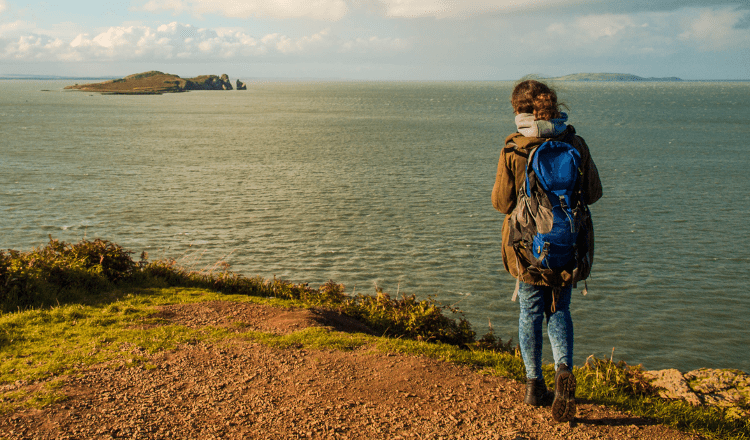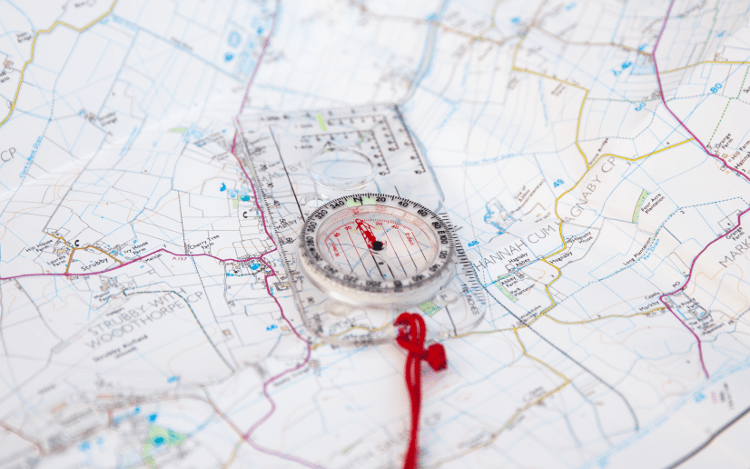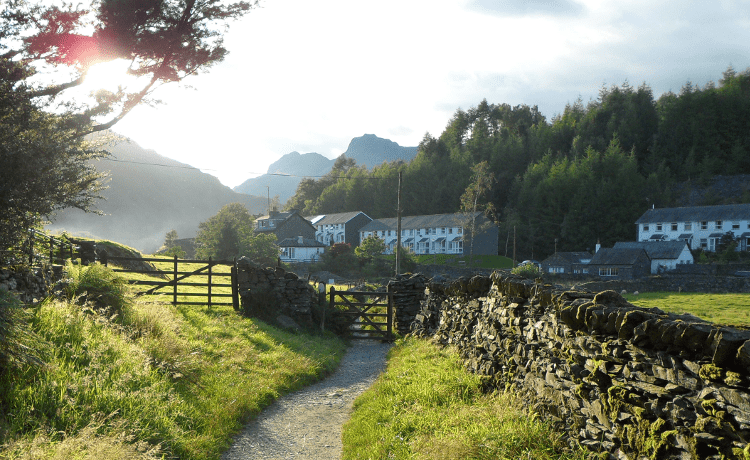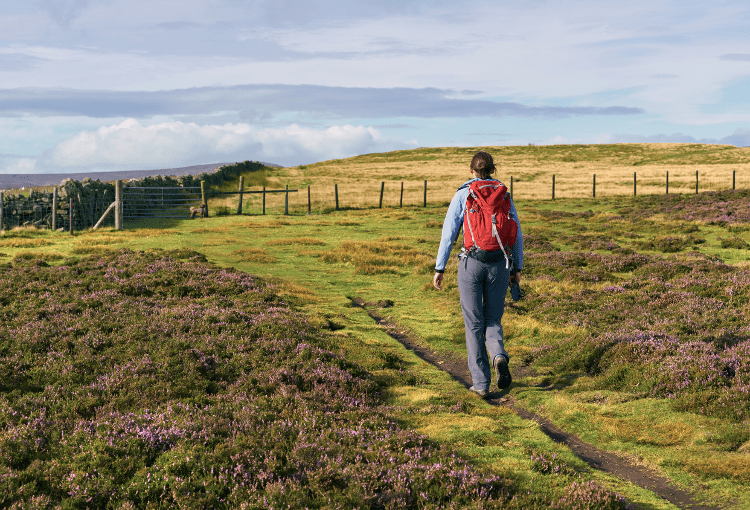The Benefits of Solo Walking
Walking alone has all sorts of benefits. Enjoy your own company and see nature at your own pace on a solo walk.
The Benefits of Solo Walking
https://www.contours.co.uk/solo-walking
by Nicky Jaquiery
As someone who regularly walks alone and feels comfortable in the outdoors, the prospect of walking alone doesn’t worry me. Having said that, as a solo traveller I think additional considerations need to be taken into account, especially in winter when the conditions can be harsher and it gets dark much earlier.
In this article I’m going to take you through some of the benefits of solo walking and also highlight what I believe are the necessary precautions to take. Hopefully, I’ll convince those sceptics amongst you to don your boots and set off walking by yourself!

For me, there are two main advantages to walking by myself.
Firstly, I don’t have to plan a walk around anyone else’s timetable. Don’t get me wrong, I enjoy walking as part of a group. Still, sometimes I want to be able to set off on the spur of the moment; I enjoy being spontaneous in terms of where I choose to go.
I like to be able to decide at the last minute whether or not to set off from home, drive to a starting point in the car, or go for a valley walk or a mountain traverse. The freedom to make snap decisions can be extremely exhilarating and satisfying.
The other big advantage is that I find walking alone very therapeutic, in the sense that I can connect with what’s going on around me and really appreciate the natural environment.
It’s actually quite difficult to do this when you’re in a group, particularly if there are some people who spend a lot of the time talking! Much like when I go for a run, walking alone allows me to zone out. I forget about work or whatever else is on my mind.
I find that “connecting with my soul” in this way makes me feel good, which I’m sure must improve my mental health and wellbeing.
One of the other benefits of walking alone is that it allows you to walk to your own agenda. You can spend the time however you like. Whether that’s stopping at your favourite pub or cafe for lunch, standing still and listening to the birds or taking a different footpath, it’s entirely up to you.
The pace is yours alone, too. You can walk as slow or as fast as you like without having to consider anyone else. When you’re in a group you can only walk as fast as the slowest person. When you’re by yourself, you have much greater flexibility and you can make your own choices; you can walk your own walk!
Walking alone does mean that you have to rely on your own map reading skills, and for some of you, this may put you off going out by yourself. But, let me reassure you, even if you’re new to solo walking and you’re not used to doing the navigating, I can guarantee that you’ll find the achievement of successfully navigating your way a rewarding experience.
It may be that you don’t go out walking by yourself because you’re afraid to, whether that’s because you’re scared of heights, the dark, getting lost or simply being alone. Solo walking can help you overcome your fears and make you realise that it’s not something to be afraid of, but rather something you can enjoy and look forward to.

To truly reap the benefits of solo walking, I believe there are certain precautions that need to be considered, especially if you’re going out walking by yourself for the first time.
Remember, getting lost or injuring yourself is more serious when you’re on your own than if you’re part of a group, especially if this happens during winter. As far as possible, take action to ensure the worst doesn’t happen by being properly prepared.
It makes sense to start with walks in an area you know. Gradually build up the length and difficulty of your route over several adventures. If you have limited map reading skills, don’t let this deter you: simply choose a recognised public right of way in an area you know and practise using a map and compass to build up your confidence.

Once you feel more confident, try a walk in a less familiar area. The most important factor is to know your own limits, both in terms of your skill level and also what you feel most comfortable doing.
Before setting off on your walk, tell someone you’re going and give them a rough idea of your intended route and your expected finish time. At this time of year, I think it’s advisable to include potential escape routes or route deviations in case bad weather or lack of daylight means you have to cut short your walk.
Don’t forget to let the person know when you’ve finished your walk. It could be very embarrassing if the mountain rescue service is called out on your behalf when you’re already cosy and warm on the sofa!
Check the weather forecast before you leave and be prepared to postpone your walk if bad weather is expected.

In winter, adverse weather can slow down your progress, particularly snow and icy conditions. The last thing you want is to have to rush your walk, especially in the latter stages when you’re tired. This is not the time to be taking risks since it’s when you’re most likely to injure yourself.
So, take into account the weather when planning how far you intend to walk and make sure you give yourself sufficient time to complete your walk safely.
If you really are worried about venturing out on your own for the first time, choose an area or a specific public right of way where you know there will be other walkers. There are two benefits to this: you’ll be sure to encounter other people if you do want some company, and should the worst happen and you do have an accident, it won’t be long before another walker comes along to help you.
Take enough supplies with you, but don’t carry too much! It’s more important to prioritise what you need when you’re walking alone as there is no one else to share your load. Go as light as possible, since a heavy rucksack will slow you down.
At this time of year, be particularly safety-conscious and make sure to carry a torch and extra batteries, as well as sufficient first aid supplies and extra layers of clothing.
Give solo walking a try and I can guarantee you’ll quickly come to appreciate the rewards of being out by yourself!
Outdoors Enthusiast
Nicky Jaquiery is a frequent contributor to the Contours Holidays blog, tapping into her vast experience out in the countryside as walker and runner to produce thoughtful and practical articles.